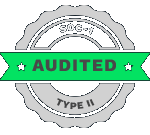Are data silos impacting & draining the budgets of IT operations? Are the data silos preventing your team from accessing the data and making timely business decisions?
The hidden costs of data silos include higher operational and IT expenses, decreased employee productivity due to time spent finding data, missed revenue opportunities because of poor customer insights, and flawed business decisions from incomplete or outdated information.
Table of Contents
What is a Data Silo?
Data silos are secluded repositories of data that cannot be accessed by different departments within a company. They can occur for various reasons like faulty system software updates or software integration issues. They are considered as a sign of poor data management mechanisms.
Data silos in business also lead to customer churn, ineffective network management, slower response times, and a negative impact on employee morale and burnout.
How is siloed data so harmful for my organization?
When executives lack visibility into fragmented data landscapes, the business suffers: operational blind spots, delayed market responses, and eroded performance metrics.
Data silos within your company can result in numerous negative impacting issues, affecting the organizational workflow and efficiency.

The business consequences of siloed data are tangible and measurable across efficiency, collaboration, cost structure, and customer experience.
-
Restricted efficiency: Poor data performance & use of outdated information will result in poor productivity for the team or inconsistent results.
-
Coordination & communication problem: Lack of unified & updated data causes teams to be unable to communicate properly, leading to workplace stress.
-
Unnecessary costs: Experiencing data silos can increase your expenses. You may need more storage and tools to help the situation, and this will cost you time, effort, and money in the long run.
-
Customer experience: Data fragmentation diminishes customer experience, resulting in churn, negative brand perception, and a measurable decline in lifetime value.
Addressing data silos in business is not something that CXOs can forget. They need to incorporate timely action for safeguarding competitiveness, compliance, and capital efficiency.
Snowflake Data Architecture as the Central Nervous System
Snowflake functions as the enterprise’s central nervous system—unifying, governing, and scaling data to unlock strategic insights.
Snowflake architecture design delivers unified governance, scalable integration, and cost optimization—hallmarks of an intelligent enterprise Snowflake Data Architecture platform.
Snowflake compiles data from various sources such as SaaS applications, databases, and cloud storage. Then, it combines them into a single and unified platform, removing the need for multiple databases, giving users a single point of information.
By automating tasks and managing infrastructure, Snowflake simplifies data warehousing and eliminates the complex engineering typically associated with managing scattered data resources.
Preventing Shadow IT and Rogue Analytics
Shadow IT, the unauthorized systems outside IT governance, creates security vulnerabilities, compliance gaps, and uncontrolled costs.
Snowflake helps in preventing this shadow IT & rouge analytics by offering a secure, centralized Snowflake Data Architecture with features such as user authentication, strict access controls, and comprehensive auditing.
How Snowflake Prevents Shadow IT
By consolidating data into a single, trusted platform, Snowflake reduces the incentive for users to create their own unauthorized data silos, which is the essence of shadow IT. Snowflake architecture provides a robust metadata service and external table metadata to track where data comes from and who accesses it, enabling comprehensive data governance and visibility into data usage.
The platform’s AI-based monitoring continuously checks for configuration drifts and suspicious activities, allowing for rapid detection and response to potential threats, including unauthorized data access attempts.
How Snowflake Prevents Rogue Analytics
Snowflake enforces enterprise-grade access controls and governance, ensuring only the right people access the right Snowflake Data Architecture reducing compliance risk and strengthening trust. The use of Multi-Factor Authentication (MFA) through an identity provider is a recommended best practice for Snowflake to add an extra layer of security for user access.
Snowflake protects sensitive information with built-in safeguards, ensuring compliance with privacy regulations and preventing data misuse.
The platform’s comprehensive auditing capabilities track data lineage and user activity, providing a trail of who touched which data, which is crucial for identifying and stopping rogue analytics.
By combining strong security features with centralized Snowflake Data Architecture, it provides a secure and governed environment for data analytics, thereby minimizing the risks associated with shadow IT and rogue data practices.
Leveraging Snowflake Data Architecture Lineage for Compliance and Trust
Snowflake’s data lineage ensures compliance and trust by tracing data origin, use, and quality—meeting regulations, reducing risk, and enabling reliable decisions.
Snowflake architecture offers built-in tools such as Snowsight’s lineage view and audit logs to achieve this, supported by Snowflake Horizon for advanced governance capabilities.
For Compliance:
-
Decision makers need to understand that data lineage lets businesses exhibit compliance to various regulations such as GDPR by showcasing where all sensitive data & other information are stored, who has access to them, and how are they used/processed.
-
By providing a clear view of data movement, lineage helps in managing risks associated with data handling, saving time and reducing the potential for costly penalties during audits.
-
Snowflake’s audit logs track all data activities, providing an accountable record of data flow and usage to meet compliance requirements.
For Trust:
-
Lineage clarifies the source and destination of data, providing context for its journey and helping users understand the origins of any data they are consuming.
-
When errors occur in data or reports, lineage quickly identifies the root cause by tracing the data’s transformations, restoring confidence in the data’s accuracy.
-
Understanding the relationship between different data objects allows users to anticipate the downstream impact of any changes, minimizing disruptions and maintaining business continuity.
By tracking data transformations, lineage helps proactively identify and address data quality issues, leading to more reliable and trustworthy data for decision-making.
Recommended Reading:
- Snowflake Cortex AI: How Enterprises Can Scale AI Workflows with Confidence
- Snowflake Cortex Agents: Scalable AI for Enterprise Data Insights
- Snowflake Openflow: The New Highway for Enterprise AI
- Generative AI & Snowflake: How it is Driving the No-Code AI Future?
- AI App Development with Snowflake: Understanding the Enterprise Shift to AI-Powered Applications
- Snowflake AI Strategy: Bringing A New Dawn of Intelligence Enterprises
CFO-Level Savings Through Snowflake Data Architecture Excellence
CFO-level savings through architectural excellence with Snowflake can be achieved by implementing strategic cost optimization techniques at various layers of the snowflake architecture. Snowflake’s cloud-native design, separating compute and storage, offers unique opportunities to minimize waste and maximize efficiency.
From Chaos to Cash: How Snowflake Delivers CFO-Grade Savings
The serverless features such as Snowpipe, Automatic Clustering, and Search Optimization Service, are billed separately.
Key snowflake architecture strategies for CFO-level savings
-
Optimize virtual warehouse configuration
-
Manage data storage and lifecycle
-
Implement robust monitoring and governance
Real-world examples
Companies like Instacart have significantly reduced their Snowflake bills through similar cost optimization efforts, demonstrating the potential for substantial savings. Forrester’s Total Economic Impact study indicates that Snowflake can deliver a 612% ROI and over $21 million in benefits over three years.
Another Forrester study found a 354% ROI and $24.9 million in benefits over three years for organizations using Snowflake’s AI Data Cloud.
Conclusion
The Bottom Line: Don’t Let Poor Snowflake Data Architecture Drain Your Future
Enterprises that fail to address data silos today will be tomorrow’s laggards, outpaced by competitors who move faster, serve smarter, and spend less. Snowflake’s architecture ensures your enterprise is built for the next decade, not just the next quarter.
Snowflake rewrites this story by delivering a governed, cost-efficient, and insight-driven data foundation.
-
For CFOs, that means measurable savings.
-
For CIOs, that means operational agility.
-
For CEOs, that means faster growth and a market edge.
Act now: Unify your data, safeguard compliance, and unlock ROI that your CFO and CIO can both measure.
From preventing shadow IT to optimizing CFO-grade savings, the right foundation makes all the difference. Explore how BluEnt’s Snowflake Consulting and Implementation services can transform your data ecosystem into a true growth enabler.
FAQs
What financial risks do data silos pose?They lead to inefficiency, duplicate work, misinformed decisions, and increased OPEX in managing fragmented systems.
How does Snowflake function as a ‘central nervous system’ for data?Snowflake unifies disparate data, enabling consistent governance, fast query performance, and simplified operations across use cases Snowflake.
How does Snowflake curb shadow IT and rogue analytics?By providing a governed, centralized platform with built-in access controls, auditors and teams no longer need to spin up unsanctioned systems for ad-hoc analytics.
Why is data lineage important, and how does Snowflake support it?Lineage ensures traceability and regulatory compliance; Snowflake enhances visibility and governance by integrating lineage-aware features Snowflake+1.
What CFO-level savings can organizations expect from the Snowflake?By consolidating transactional and analytical workloads (via Unistore), reducing complexity, and cutting down on ETL overhead, CFOs can see significant cost reductions in both OPEX and capital investments Snowflake.
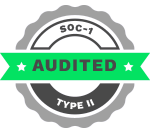










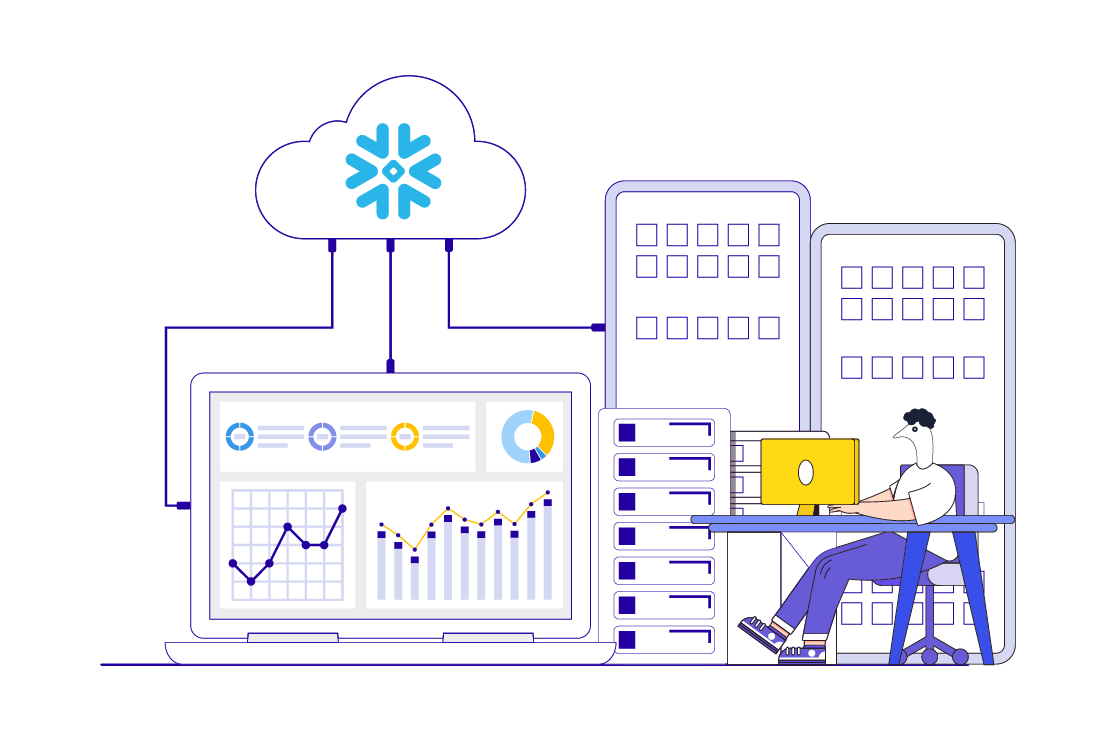
 Connecting Snowflake with Microsoft Fabric: Enabling Multi-Cloud Data Strategy for Global Enterprises
Connecting Snowflake with Microsoft Fabric: Enabling Multi-Cloud Data Strategy for Global Enterprises 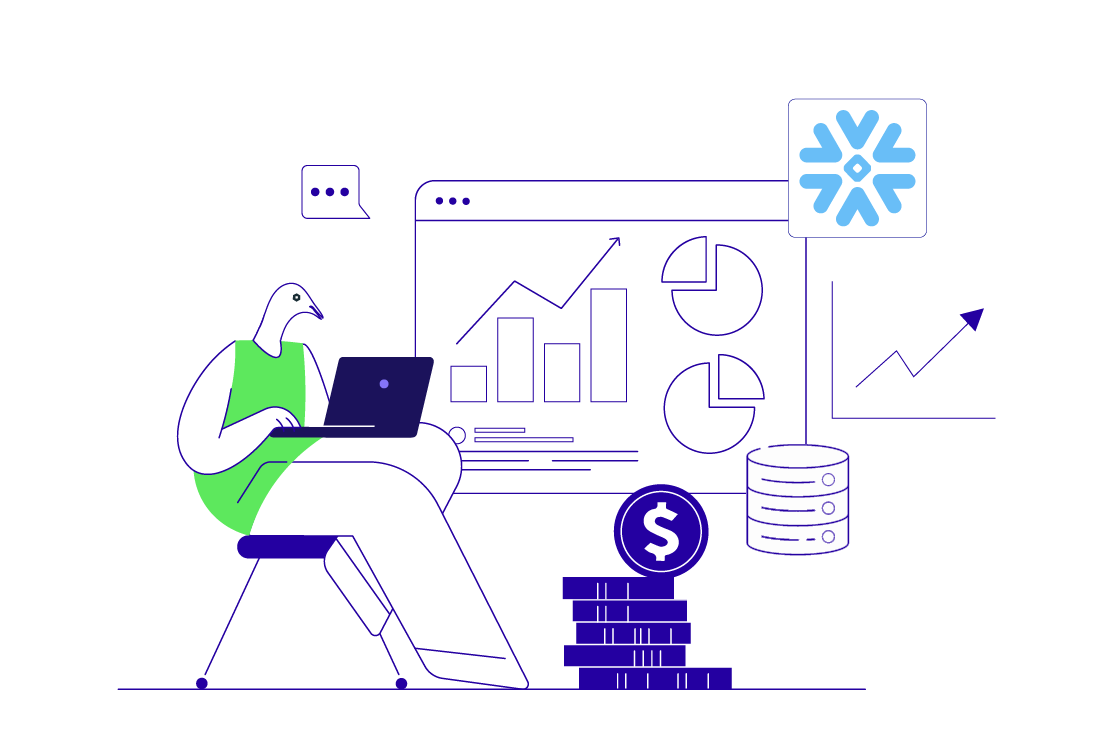 Snowflake Cost Optimization Strategies for Smarter Enterprises
Snowflake Cost Optimization Strategies for Smarter Enterprises 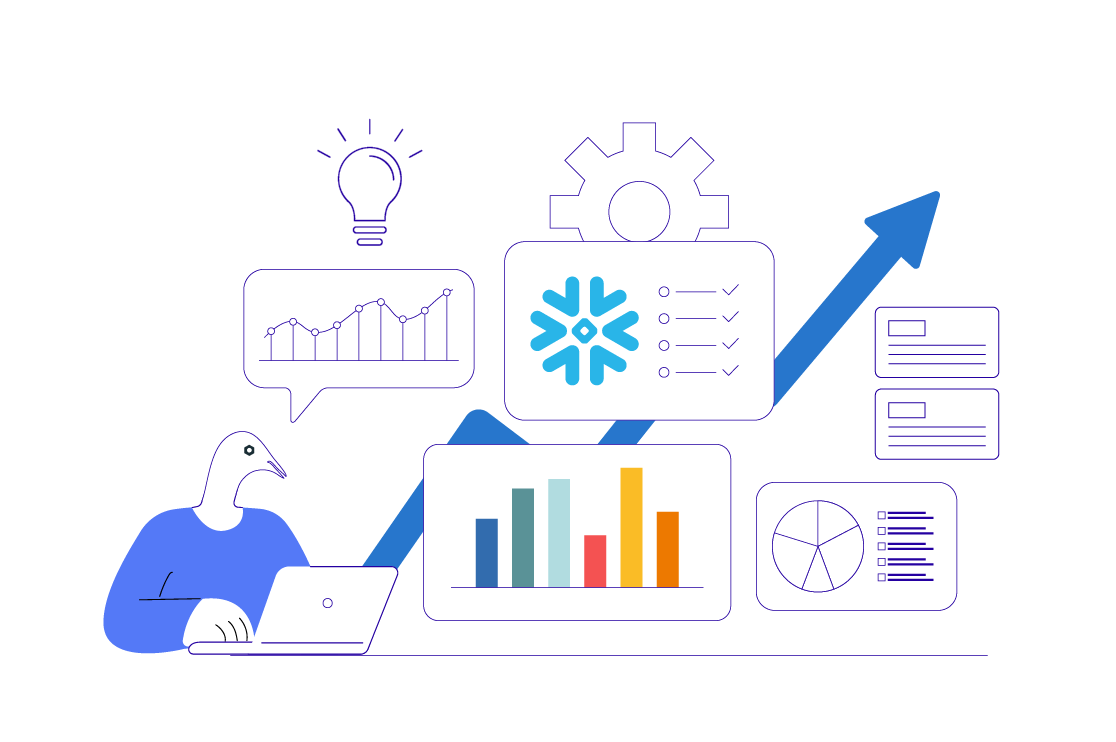 Make Your Business Smarter & Faster with Snowflake Business Agility Guide
Make Your Business Smarter & Faster with Snowflake Business Agility Guide 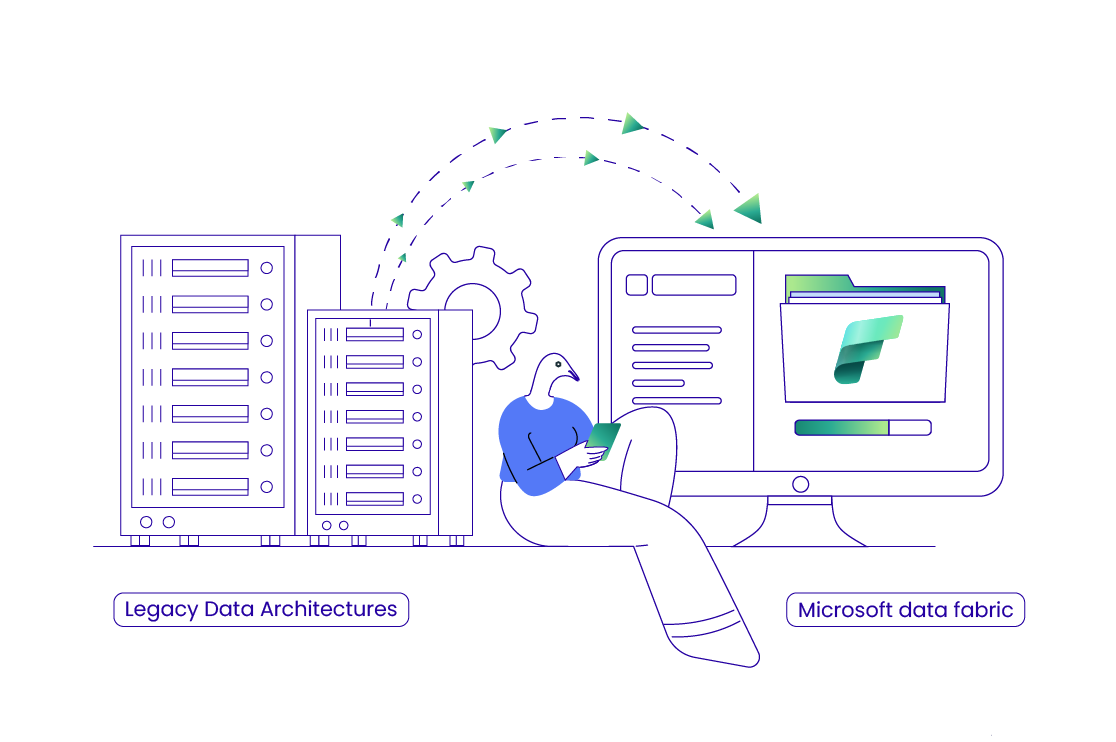 Migrating Legacy Data Architectures to Microsoft Data Fabric: Key Risks, Rewards, & ROI
Migrating Legacy Data Architectures to Microsoft Data Fabric: Key Risks, Rewards, & ROI 